|
Over the years, I’ve had some favorite (and not so favorite) trail experiences. Here’s a lengthy list, but keep in mind that these are only my opinions and each hike will vary with time, the seasons, the weather, etc. To jump to a specific category, follow these links: Backpacking Trips, Camping, Trails, Weather, Flora/Fauna, Food And Water, Unique Features
BACKPACKING TRIPSBest Overall Backpacking Trip – Bright Angel Campground, Grand Canyon National Park – Northwest Arizona. The Grand Canyon is awesome any way you see it, and on this multi-day loop hike we started at the South Rim hiked to the Colorado River and looped back to the South Rim Village. Our hike through the Canyon was amazing and when combined with some snowboarding in Utah and some gambling in Vegas this vacation was tops. Worst Overall Backpacking Trip – Tusquitee Bald, Nantahala National Forest, Tusquitee Ranger District – Western North Carolina. Most Memorable Backpacking Trip – Siler Bald, Appalachian Trail, Nantahala National Forest – Western North Carolina. When The Joker decides to go streaking on an exposed mountain top in twenty degree weather I guarantee it’s something you will not forget. Best Adventure, Most Exciting – Zone 31-32, Denali National Park. It was my first trip to Alaska and we spent five days wandering around in the backcountry in Denali National Park. We saw five grizzly and walked directly into a moose feeding in the dense brush along the Toklat River. Best Group Dynamics – Whitewater Falls, Nantahala National Forest – Western North Carolina..
Best Hitch – 1. Upper Goose Pond, Appalachian Trail – Western Massachussetts . 2. Clarendon Gorge, Appalachian Trail – Southern Vermont . 3. PA State Route 16, Appalachian Trail – Pennsylvania. Nomad and I caught a ride with two twins on their way to a music festival during our 1994 thru-hike. We hit town with them, loaded up some supplies, and surprised a bunch of thru-hikers late night with food and beer at Upper Goose Pond cabin. Best Trail Magic – Eckville Shelter, Appalachian Trail – Southeastern Pennsylvania. A former thru-hiker ran into Laid Back Sue and I as we used the pay phone in the small town of Port Clinton, Pennsylvania. Later that night she met us near the Eckville Shelter and we packed in a few pizzas, some beers, and some sodas for the thru-hikers gathered at the shelter. Most Miles On Trail In A Single Day (w/ Backpack) – Mt. Algo Lean To, Appalachian Trail – Western Connecticut. (22 Miles)
Most Days On Trail Without Re-Supply – 100 Mile Wilderness, Appalachian Trail – Central Maine. (8 Days) The Appalachian Trail Conference recommends ten days to complete the 100 Mile Wilderness in Northern Maine. I made it in eight days with three other thru-hikers but still had to ration my food starting on day five. Most Days On Trail Without A Shower – 100 Mile Wilderness, Appalachian Trail – Central Maine. (10 Days) It only took us eight days to get through the 100 Mile Wilderness, but it took another two days to hike to Mt. Katahdin and climb it. There were no showering facilities until we hit the base of Katahdin. Most Isolated (Most Solitude) – Zone 31-32, Denali National Park – Central Alaska. We didn’t see a single backpacker (or any signs of a hiker) in the entire five days we spent in the bush of Denali National Park. Most Frightened – Pine Knob Shelter, Appalachian Trail – Western Maryland.
Most Lost – Looking Glass Rock, Pisgah National Forest – Western North Carolina. The Joker and I decided to night-hike to the summit of Looking Glass Rock and immediately made a wrong turn within the first two minutes of leaving the trailhead. We spent the rest of the night bushwacking up the side of the mountain and eventually set-up camp (minus some forgotten tent poles) around 11pm. Most Dangerous – Zone 31-32, Denali National Park – Central Alaska. A grizzly bear followed us for nearly two hours along the Toklat River and closed within twenty yards before we reached the park road and flagged down a backcountry bus. Most Difficult Backpacking Trip – Zone 28, Denali National Park – Central Alaska. We hiked for eight hours along the Teklankia River and covered only two miles in a nameless canyon we dubbed Hells Canyon. At times, we thought Smoky was going to have cardiac arrest. Most Elevation Change – Mt. Katahdin, Appalachian Trail, Baxter State Park, North Central Maine. (10,000 feet/day)
Highest Elevation – Mt. Phillips, Philmont National Scout Ranch, Northern New Mexico. (11,700 feet) Well, it’s not exactly mountaineering but I guess this is as high as I’ve climbed on a backpacking trip (despite numerous trips to Colorado, Montana, and Wyoming). This was also my first real backpacking trip which I took with the Scouts in 1983. Lowest Elevation – Stafford Beach, Cumberland Island National Park, Southeast Georgia. (sea level) Other than Death Valley (which I have yet to visit), sea level and coastal hikes qualify as the lowest elevation. This is one of the first of a few coastal hikes I’ve done. Biggest Group – 1. Gum Gap, Caesars Head State Park, Northwest South Carolina. (11) 2. Siler Bald, Nantahala National Forest – Western North Carolina. (9) Typically I hike with only a handful of people at a time, but this trip to Gum Gap was a big one, and the trip to Siler was a close second. Biggest Surprise – Stratton Bald, Nantahala National Forest, Joyce Kilmer-Slickrock Creek Wilderness – Western North Carolina.
Earliest Start – Trout Creek Campsite, Appalachian Trail – Western Virginia. Summer hit early in the mountains of western Virginia in 1994, and some fellow thru-hikers and I decided to beat the heat by hiking in the early morning hours. We got up at 4:30am and hit the trail by 5am this morning (although I confess that I’m not much of a morning person and don’t expect to break this record anytime soon.) Latest Start – Rabun Bald Bartram Trail – Northeast Georgia. I’ve night-hiked into camp a number of times, but the latest start I had was probably around 9:30pm on this hike to Rabun Bald. CAMPINGBest Overall Campsite – Thomas Knob Shelter Area, Mount Rogers NRA, Appalachian Trail – Western Virginia. Worst Overall Campsite – Sarver Cabin Campsite, Appalachian Trail – Southwestern Virginia. This is definitely the most overgrown, snake ridden and downright spooky place I’ve every camped. The fact that it was a steep and difficult descent to the area from the Appalachian Trail and that no water was available didn’t make things any better. The climb out of here was no picnic either. Best Spring Campsite – Springer Mountain Shelter, Appalachian Trail – North Georgia. Yeah, this place is mobbed from late February through mid April but if you want to get pumped up about backpacking, then this is the place. Over 2000 thru-hikers start their northbound journey on the A.T. at Springer Mountain each year. Worst Spring Campsite – Looking Glass Rock, Pisgah National Forest – Western North Carolina. The Joker and I decided to night-hike to the summit of Looking Glass Rock and immediately made a wrong turn within the first two minutes of leaving the trailhead. We spent the rest of the night bushwacking up the side of the mountain and eventually set-up camp (minus some forgotten tent poles) around 11pm. Best Summer Campsite – Conasauga River, Cohutta Wilderness, Chattahooche National Forest – Northeast Georgia. Summer can be brutally hot in North Georgia, but the Conasauga delivers some nice swimmin’ and fishin’ holes (as does the nearby Jacks River). Worst Summer Campsite – Sarver Cabin Campsite, Appalachian Trail – Southwestern Virginia. This is definitely the most overgrown, snake ridden and downright spooky place I’ve every camped. The fact that it was a steep and difficult descent to the area from the Appalachian Trail and that no water was available didn’t make things any better. The climb out of here was no picnic either. Best Fall Campsite – Nahmakanta Lake, 100 Mile Wilderness, Appalachian Trail – North Central Maine. This is a great campsite, especially in the fall. Nahmakanta Lake is deep in the 100 Mile Wilderness and it is very difficult to access, so you are almost assured privacy even though it is located a short distance from the Appalachian Trail. I camped on the lake with Delta Force during the last few days of my thru-hike, and we watched the sun set over a small campfire along the banks of the lake. Worst Fall Campsite – Rabun Bald Bartram Trail – Northeast Georgia. The Camel and I got hit by two wicked thunderstorms on this exposed summit and I had to move camp in the middle of the night in between storms. The Camel was warm and dry and decided to stay put. He feared for his life the rest of the night. Best Winter Campsite – Bright Angel Campground, Grand Canyon National Park – Northwest Arizona. Worst Winter Campsite – Bradley Fork, Great Smoky Mountain National Park, Western North Carolina. There was so much snow on the ground, The Ox and I walked past this designated campsite twice. We finally found the firepit after digging in snow for 20-30 minutes. Best Trailside Hostel – Shaw’s Boarding House, Appalachian Trail – Central Maine. Mr. and Mrs. Shaw were some of the nicest people I met on the Trail in 1994. Mrs. Shaw is a great cook, and Mr. Shaw can play a mean game of horseshoes. Best Trailside Hotel – Long Trail Inn, Appalachian Trail – South Central Vermont. Well it’s not exactly trailside anymore with the relocation of the A.T., but it was in 1994. The Long Trail Inn got it’s start as a ski inn for nearby Killington Ski Resort, but it also caters to hikers and backpackers. There’s a nice bar in the lodge too that occasionally has live music. Best Trailside Campground – 1. Harpers Ferry Camp Resort, Appalachian Trail – Western West Virginia. 2. Jellystone Park Campground, Appalachian Trail – Southwestern Virginia.
Best Campfire – Whitewater Falls, Nantahala National Forest – Western North Carolina. When it comes to campfires, The Camel doesn’t mess around – especially when the temperature is in the single digits. Best Wilderness Party – Private Campground, Chimney Rock State Park – Western North Carolina. This was actually a drive-in site, but we did a fair amount of hiking during the day so I’ll count it. We stayed near Chimney Rock on fall break during my senior year in college. It snowed that night, but we were well prepared with firewood and spirits. Nicest Shelter – Bryant Ridge Shelter, Appalachian Trail – Southwestern Virginia. There’s some really nice shelters on the A.T., but this one in Virginia blew me away in 1994 (although I saw a shelter with a shower near the Shenandoah National Park in 1996). Worst Shelter – Happy Hill Cabin, Appalachian Trail – East Central Vermont.
TRAILSBest Loop Hike – 1. Bradley Lake, Grand Teton National Park – Northwestern Wyoming . 2. Backcountry Loop, Providence Canyon State Park – Southwestern Georgia. It’s an easy hike to both Taggart Lake (6,902 feet) and Bradley Lake (7,022 feet) which are located a short distance from the town of Jackson, Wyoming. The lakes also have spectacular views and abundant wildlife. The Ox and I nearly walked into a large bull moose near Bradley Lake. Best Shuttle Hike – 1. Gunsight Pass, Glacier National Park – Northwestern Montanta. 2. Heart Lake, Yellowstone National Park – Northwestern Wyoming. 3. Bright Angel Campground, Grand Canyon National Park – Northwest Arizona. I’ve done some great shuttle hikes, but Glacier has it over these Yellowstone and Grand Canyon hikes (which take 2nd and 3rd respectively). The hike over Gunsight Pass is a popular one in the park because it has two stunning alpine lakes, a windy mountain pass (with a cabin shelter), and plenty of wildlife (and trout) on the route. Best In/Out Hike – Mount Hood, Pacific Crest Trail, Mount Hood National Forest, North Central Oregon. Mackie, Slawdog and I hiked from the Timberline Lodge along the base of Mount Hood and set up camp along the Pacific Crest Trail. Mount Hood is an impressive sight from the base of the mountain which was covered with wildflowers. We also caught a killer sunset not far from our camp. Best Trail Conditions – Georgia Section, Appalachian Trail – North Georgia.
Worst Trail Conditions – Tusquitee Bald, Nantahala National Forest, Tusquitee Ranger District – Western North Carolina. I don’t think any federal, state, or volunteer organization has worked on the trails in this area in a long time (by the looks of things). I’m sure they’d welcome some help. A mid-summer hike here is nothing short of brutal. I’m sure The Weasel concurs. Best Trailhead Parking – Bright Angel Trailhead, Grand Canyon National Park – Northwest Arizona. You’ll be fired up to see a restaurant, snack shop, and full service bar only a few feet away after the difficult nine mile hike out of the Grand Canyon. Worst Trailhead Parking – 1. Yellow Creek Gap Road, Nantahala National Forest, Appalachian Trail – Western North Carolina. 2. Kinsmans Notch, White Mountain National Forest, Appalachian Trail – Central New Hampshire. There’s nothing worse than returning to your vehicle after a few days on the trail to find the windows broken (Kinsman Notch) or the tires slashed (Yellow Creek Gap). Most Difficult Trail To Access – Hogabu Hut, Kvamskogen Og Birdsdalen – Southwestern Norway.
Most Difficult Trail To Hike – Tusquitee Bald, Nantahala National Forest, Tusquitee Ranger District – Western North Carolina. I can’t reiterate how difficult this hike was. That’s why it made the list in three separate “Best And Worst” categories. Most Difficult Trail To Follow – Hogabu Hut, Kvamskogen Og Birdsdalen – Southwestern Norway. The trail was mostly covered by snow in the higher elevations and we don’t exactly speak Norwegian, so following the occasional trail sign wasn’t particularly helpful. The map and compass were quite useful though. Most Difficult Trail Ascent – Mt. Katahdin, Baxter State Park, Appalachian Trail – North Central Maine. The final 5.2 miles of the Appalachian Trail from the Katahdin Stream Campground to Mt. Katahdin climbs over 4000 feet. It’s difficult, but it’s the most rewarding section of the entire Appalachian Trail (for a northbound thru-hiker anyway). Most Difficult Trail Descent – Mt. Washington, White Mountain National Forest, – North Central New Hamphire.
Most Strict Park Management – Ice Water Springs Shelter, Great Smoky Mountain National Park – Western North Carolina. All National Parks have a lot of rules and it’s a matter of necessity since they get so much use. The Great Smoky Mountain National Park takes it to an extreme though, mainly because it gets more front and backcountry traffic than any other National Park in the United States. The overcrowding and toilet overflow at Ice Water Springs Shelter in 1992 is a case in point. I heard it got so bad here that this shelter is no longer available for public use. Most Trail Traffic – Charlie’s Bunion, Great Smoky Mountain National Park – Western North Carolina. We must have passed over 40 people on a three-day weekend in October in the Great Smoky Mountain National Park and we didn’t backtrack the entire day. Everyone was hiking from Newfound Gap to Charlie’s Bunion to enjoy the fall foliage. Least Trail Traffic – Zone 28, Denali National Park – Central Alaska. We spent three days in the backcountry of Zone 28 and didn’t see a soul. The park ranger hadn’t been to the canyon we hiked since 1987 when he found the body of a female hiker who had slid down the canyon walls and drowned. I guess that explains why no one visits this area. WEATHERBest Sunset – Rabun Bald, Bartram Trail, Chattahoochee National Forest – North Georgia. Best Moonrise – Hangover, Joyce Kilmer Slickrock Creek National Forest, North Carolina. The first time I witnessed a sunset and a moonrise occur simultaneously was on a backpacking trip in the Joyce Kilmer-Slickrock Creek National Forest. The Operator and I had just reached the rocky outcrop of Hangover when the sun fell behind the horizon at Stratton Bald. Directly behind us was a full moon rising in the east. There was low laying fog in the valley below us and the scene was quite impressive. Worst Overall Weather – Rabun Bald, Bartram Trail, Chattahoochee National Forest – North Georgia. I’ve been chased off the summit of Rabun Bald by a thunderstorm just about every time I’ve camped on it. On this spring trip, however, the rain was relentless. It poured all night and all day the following morning. At 5am on April 6, 1997, we sat huddled in the woods and waited for the lightening to clear the summit. The sun rose to illuminate dark gray skies by 7am and we hiked back to the trailhead in heavy rains. Driest Conditions – Bright Angel Campground, Grand Canyon National Park – Northwest Arizona. Well, it is a desert, and the fact that we hiked it in the middle of the winter when there were no thunderstorms made for even drier conditions. Most Lightening – Springer Mountain Shelter, Appalachian Trail, Chattahoochee National Forest – North Georgia.
Most Stars – Shinning Rock, Shinning Rock Wilderness, Pisgah National Forest – Western North Carolina. It was a cool autumn night in the Shining Rock Wilderness and the stars were out in abundance after the sunset and the skies cleared. There’s a lot of wide open space in the Shining Rock area which makes it a great place to check out the night sky. Most Fog – Mount Washington, White Mountain National Forest, Great Gulf Wilderness – Central New Hampshire. The fog was so thick that we didn’t see the Cog Railway Train until it was right in front of us. We hiked down from the train tracks about two thousand feet from the summit of Mount Washington and the fog completely disappeared. Most (And Hardest) Rain – Moreland Gap Shelter, Appalachian Trail – Western Tennessee. I hiked five miles in what was undoubtedly the hardest rain I’ve ever witnessed. It started with a thunderstorm and a heavy, hard rain that I expected to pass quickly, but it never did. I was so cold when I finally hit Moreland Gap Shelter that I got in my wet sleeping bag and didn’t leave it the rest of the night. I also vowed to line my stuff sack with a plastic bag from that day forward (and have kept that promise to date). Most Snowfall Overnight – Rhododendron Gap, Jefferson National Forest – Southwestern Virginia. The freak snowstorm started as we arrived at Rhododendron Gap. The forecast was for clear skies, but the weather man missed this one. We immediately pitched camp and I set off in a blizzard to find a nearby spring. The snow was so intense I could hardly see until I crossed a ridge and saw a troop of Boy Scouts having the time of their life around a raging fire. They showed me the spring and I made it back to our campsite. The Seeker, his wife, Reece and I spent the rest of the night hibernating in our tents as the blizzard raged during the night. The scene the following morning was spectacular, but my batteries froze overnight and I didn’t get a photo of the winter scene. Ironically, we headed here to see the fall colors and left 70 degree temperatures in Charlotte, N.C. Most Snow On Trail – Bradley Fork, Great Smoky Mountain National Park, Western North Carolina.
Coldest (Daytime) – Mollies Ridge, Great Smoky Mountain National Park, Western North Carolina. There wasn’t a lot of snow on the ground, but we had temps in the teens during our Mollies Ridge loop hike in January 1993 (and that doesn’t include the wind chill). Coldest (Nightime) – Chattahoochee National Forest, Toccoa Ranger District, North Georgia. We had single digit temps on this winter hike along the Foothills Trail in Western North Carolina. So The Camel whipped up an inferno that made it feel a balmy forty degrees. Unfortunately, there was a price to be paid. Flying embers took out one Thermarest and two fleeces. I learned first hand that the ground is much colder when your Thermarest is flat. Hottest (daytime) – Trout Creek Campsite, Appalachian Trail – Western Virginia. Summer hit early in the mountains of western Virginia in 1994, and some fellow thru-hikers and I decided to beat the heat by hiking in the early morning hours. We got up at 4:30am and hit the trail by 5am. By 10am, it was hot and excruciatingly humid with temps near 100 degrees. We called Hawkeye and he dropped us off at a nearby Best Western where a large group of thru-hikers had already gathered by the pool. Hottest (nightime) – Appalachian Trail, Blue Blaze Hostel, Central Pennsylvania.
Worst Overall Storm – 1. Chattahoochee National Forest, Bartram Trail, North Georgia. 2. Appalachian Trail, 100 Mile Wilderness, Central Maine. I’ve been chased off the summit of Rabun Bald by a thunderstorm just about every time I’ve camped on it. On this summer trip, however, The Ox and I got pummeled by a wicked storm that blew the fly off our tent and left two gallons of water on our sleeping bags. We were able to dry them from the firetower platform but seriously considered hiking the 4.2 miles back to the car in the dark. Worst Wind – Appalachian Trail, 100 Mile Wilderness, Central Maine. Walking Stick, Laughing Bird, Squeeze Box, Delta Force and I watched a spectacular sunset at a deserted Rainbow Lake in the 100 Mile Wilderness during our 1994 thru-hike. We sacked out around 9:45pm but were literally blown from the beach around 10:30pm when a major storm hit the area. Stick and Bird and I were completely blown off the sandy beach (with us inside our individual tents.) Somehow Squeeze Box and Delta Force were able to hold their ground, but I ended up re-pitching my tent in a driving rain about twenty yards into the woods around 10:45pm. FLORA AND FAUNABiggest Trees – Redwood National Park, North Western California. This National Park has some of the largest trees in the world along Redwood Creek. They are so big, you can actually drive a car through one at some tourist stop near the park. Worst Insects – 1. Glacier National Park, Western Montana. 2. Denali National Park, North Central Alaska. 3. Leaf Lake, North Country Trail, Manistee National Forest – Northern Michigan .
Most Ticks – Appalachian Trail, National Zoological Park Area, Northern Virginia. The Gomite and I crossed a field in June near Front Royal, Virginia and it had so many ticks that we spent thirty minutes picking them off our legs after hiking about 100 yards. Most Wildflowers – White River National Forest, Western Colorado. ALE and I did this backcountry hike near Vail, Colorado and were blown away by the number of wildflowers along the trail. We took pictures of at least fifteen different species and they were everywhere you looked. Most Wildlife – Denali National Park, North Central Alaska. The NPS Ranger told us we’d see more wildlife in Denali National Park than in Denali State Park (which we considered hiking.) To date, I’ve never seen more wildlife on any multi-day backpacking trip. In five days, we saw caribou, grizzly, moose, dall sheep, and tons of wolf tracks along the Toklat River (but never did spot the elusive wolf). Black Bear (Closest Encounter) – 1. Pacific Crest Trail, Klamath National Forest, North Central California. 2. Beaverstone Bay, Ontario, Canada.
Bison (Closest Encounter) – Yellowstone National Park – Northwestern Wyoming. If you can make it through Yellowstone and NOT see a bison, I’m impressed. They are everywhere. On this trip, they nearly walked right passed our car. Big Horn Sheep (Closest Encounter) – Bright Angel Trail, Grand Canyon National Park – Northwest Arizona. I could see a bunch of day hikers snapping pictures less than a mile from the rim on the Bright Angel Trail. As I got closer, I realized that it was a big horn sheep (and not a deer) that they were photographing. It was only a short distance from the trail and was not afraid of the mob (as many animals seem to be in the major national parks). Bobcat (Closest Encounter) – Appalachian Trail, Blue Ridge Parkway, Peaks Of Otter Area, Western Virginia. I saw this bobcat from the backseat of a minivan as we drove the Blue Ridge Parkway across the A.T. during my thru-hike. The mother crossed the road as we passed her. She then retraced her steps across the B.R.P. to retrieve two babies that were stranded on the other side of the parkway when we passed. Caribou (Closest Encounter) – Zone 32, Denali National Park, North Central Alaska. On this trip to Denali, I saw more wildlife than on any other trip in the backcountry. We had our first Caribou encounter five minutes in to our hike and less than a 100 yards from the Denali Park Road. Copperhead (Closest Encounter) – Waitipi Campground, Western North Carolina. Monodeep apparently stepped on this copperhead as he climbed into his tent at about 1am. It was dead outside his tent door the next morning and was crushed. Coyote (Closest Encounter) – Yellowstone National Park – Northwestern Wyoming. This coyote nearly walked up to us in the parking lot near Old Faithful. At first we thought it was a stray dog, but it was definitely a coyote. Elk (Closest Encounter) – Yellowstone National Park – Northwestern Wyoming.
Fox (Closest Encounter) – Stone Mountain State Park, North Central Georgia. The Pixie and I were catching the sunset over Atlanta from Stone Mountain when a red fox came out of the woods and stood on the granite dome only fifteen yards away. Grizzly Bear (Closest Encounter) – Zone 32, Denali National Park, North Central Alaska. A grizzly bear followed us for nearly two hours along the Toklat River and closed within twenty yards before we reached the park road and flagged down a backcountry bus. Marmot (Closest Encounter) – Gunsight Pass, Glacier National Park, Northwestern Montana.
Moose (Closest Encounter) – 1st Place: Zone 32, Denali National Park, North Central Alaska. 2nd Place: Isle Royale National Park, Lake Superior, Northern Michigan. 3rd Place: Bradley Lake, Grand Teton National Park – Northwestern Wyoming. Moose are everywhere at Isle Royale National Park, and we took some great photos during that trip. In Denali, however, we literally walked right into a moose as it grazed in heavy vegetation along the Toklat River. Porcupine (Closest Encounter) – Appalachian Trail, Southwestern Massachusetts. This porky was about five feet up a tree and cleaning the bark off it when I spotted him from the A.T. He was uninterested in me, but did pose for a few pics. Raccoon (Closest Encounter) – Sea Rim State Park, Southeast Texas. This coon was fearless. It raided trash cans all night only a short distance from where Mackie and I were standing along a shelter on the Texas coast during our 1996 cross-country trip. Rattlesnake (Closest Encounter) – Appalachian Trail, Eastern Pennsylvania. I listened to a Sony Walkman at times during my thru-hike to pass the time. As a result, I nearly stepped on a rattlesnake in Pennsylvania not far from the New Jersey state line. Wolf (Closest Encounter) – 1st Place Beaverstone Bay, Ontario; 2nd Place Zone 32, Denali National Park, North Central Alaska.
FOOD AND WATERBest Water Source – Standing Indian, Appalachian Trail, Nantahala National Forest, Western North Carolina. There’s nothing like a clear cold spring high on a mountain with a nice campsite and overlook nearby. Worst Water Source – ~VA 311, Appalachian Trail, Central Virginia. The Seeker and I had to pull water from a creek surrounded by a pasture with many cows and many cow patties. Best Breakfast – Shaw’s Boarding House, Appalachian Trail – Central Maine. Well, it wasn’t exactly at a campsite, but it was during my thru-hike while I was hiking the Appalachian Trail. The Shaw’s make a mean breakfast, and the best part is that it’s all-you-can-eat, and in 1994 I think they only charged $5 for it. Best Lunch – Bright Angel Trail, Grand Canyon National Park – Northwest Arizona.
Best Dinner – Whitewater Falls, Nantahala National Forest – Western North Carolina. The first time The Camel cooked up a kielbasa in a skillet with a bunch of vegetables, I was sold. I still can’t believe he shared it. Best Dessert – Charlie’s Bunion, Great Smoky Mountain National Park, Eastern Tennessee. Slawdog, Soul Glo and I had been hiking for nearly five hours and we’re physically beat down from two days on the trail. We stopped and hid on the back side of Charlie’s Bunion to escape some cold October winds and powered down Snack Pack pudding before the final climb to Ice Water Springs Shelter. Worst Food – Whitewater Falls, Nantahala National Forest – Western North Carolina. We had a great time on this trip, but this was the worst breakfast I ever cooked. The Denver Omelet (complements of Mountain House) didn’t due well in my non-stick pan and I had some blackened eggs stuck to the bottom that required some significant effort back at the house to be removed. Most Thirsty – Shining Rock, Shining Rock Wilderness, Pisgah National Forest, Western North Carolina. Best Ocean Hike – Cape Alva, Olympic National Park, Northwestern Washington. The Ozette-Cape Alava-Sand Point loop is a shore hike along the Washington coast. The views of the ocean, cliffs, headlands, islands, and sea stacks make for an awesome hike. There is very little elevation change so it is relatively easy and there is a surprising amount of wildlife along the coast. Best Island – St. John, Virgin Islands National Park, U.S. Virgin Islands. St. John has twenty-two miles of hiking trails and most are short and lead to remote beaches where you can swim in the surf, snorkel, or just lounge around in the sun. Best Suspension Bridge – Clarendon Gorge, Appalachian Trail, Southern Vermont. There’s been some pretty impressive suspension bridges on backpacking trails that I’ve hiked, but this one at Clarendon Gorge entertained us for over an hour during my 1994 thru-hike along with Wicked Ale, Stuffsack, Tired Dogs, and Laid Back Sue. We hitched from here to Killington and really enjoyed our hiking in this area. Best Canyon – The Grand Canyon, Grand Canyon National Park – Northwest Arizona. It’s hard to argue with the grand daddy of them all. Spend a few days hiking from the Rim to the Colorado and back and you are likely to agree. Best Gorge – Linville Gorge, Pisgah National Forest, North Western North Carolina.
Best Lookout Tower – Mt. Bromley, Appalachian Trail, Southern Vermont. This place gets the nod for the activities that happened in the 24 hours I was on this mountain and not for the firetower itself. Laid Back Sue, Stuffsack, Wicked Ale, Tired Dogs, and I met the Mt. Bromley paint crew and crashed for the night in the warming hut underneath the tower after numerous trips on the Alpine Slide and a few beers at the base of the mountain. It turned out to be a long night. Best Cave – Bright Angel Trail, Grand Canyon National Park – Northwest Arizona. Well it’s more like a mine shaft than a cave, but it’s pretty cool and it’s only a short distance from the trail. Best Bald – Gregory Bald, Great Smoky Mountain National Park, Eastern Tennessee. I’ve hiked most of the balds in the south, and Gregory has some of the best views of them all. You can see in nearly every direction and there’s a huge clearing at the summit which makes a great place to relax after the climb to the top. Best Mountain – Mt. Katahdin, Appalachian Trail, Baxter State Park, North Central Maine. Best Hot Springs – Yellowstone National Park – Northwestern Wyoming. Unfortunately (and not surprisingly), I haven’t stumbled onto too many hot springs in the southeast. The only one I’ve come across in the backcountry was in Yellowstone during our 2002 trip. Best Fishing – 1. Lake Ritchie, Isle Royale National Park, Northern Michigan . 2. Salmo-Priest Wilderness, Western Washington. 3. Tuckasegee River, Nantahala National Forest, Western North Carolina. Lake Ritchie in Isle Royale National Park loaded with pike during our trip in 1996. We hooked a fish on nearly every cast. I’ve been on a few trips where we’ve caught more fish, but trout just don’t have the fight of a 3-6 pound northern pike. Best Waterfall – Rainbow Falls, Gorges State Park, Western North Carolina. I’ve seen bigger waterfalls from a distance, but you can hike right up to the base of this one which adds a lot to the experience. Most Waterfalls – Tuckasegee River, Nantahala National Forest, Western North Carolina.
Best Snorkeling – Salomon Bay, Virgin Islands National Park, U.S. Virgin Islands. I haven’t done much snorkeling on hiking and backpacking trips, but Salomon Bay was a great beach to start, and seeing a five foot tuna from ten feet made it even better. Best Swimming – 1. Salomon Bay, Virgin Islands National Park, U.S. Virgin Islands. 2. Cohutta Wilderness, North Georgia. The Cohutta has some great swimming holes, but it can’t beat the crystal blue waters, waves, and white sands of the U.S. Virgin Islands. Salomon Bay is a short hike from the main port on St. John, but it’s well worth the hike. Worst Swimming – Intermediate Lake, Isle Royale National Park, Lake Superior, Northern Michigan. I’m not a big fan of leeches, and this lake was infested with them. Mackie put one foot in the water to launch the canoe and immediately saw three leeches swimming at his naked foot. Best Views – South Kaibab Trail, Grand Canyon National Park – Northwest Arizona. The Grand Canyon is awesome any way you see it, especially from the South Rim before you descend 7-9 miles to the Colorado (depending on your route.) Worst Ford – 1. Toklat River, Denali National Park – Central Alaska. 2. Pleasant Pond Creek, Appalachian Trail, North Central Maine. Most Unique Features – Providence Canyon State Park – Southwestern Georgia. This State Park in a rural part of South Georgia absolutely blew me away. I was amazed that runaway erosion could create such a dramatic landscape in such a short period of time. Most Historic – The Chilkoot Trail, Klondike National Historic Park, Southeastern Alaska. On the Chilkoot, you are literally hiking in the footsteps of the gold rush Stampeders, and there’s plenty of artifacts on the route to remind you of it. Most Scenic – Gunsight Pass, Glacier National Park – Northwestern Montanta. I’ve hiked all over the U.S. and in a few foreign countries, but every time I go to Glacier I am still blown away. This trip in 1998 had it all: alpine lakes, wildlife, great vistas, snowfields … the list goes on. |
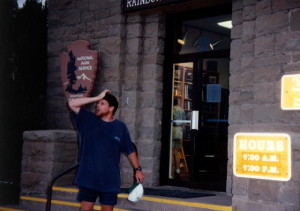


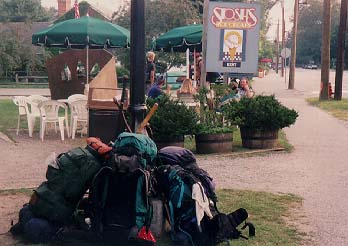
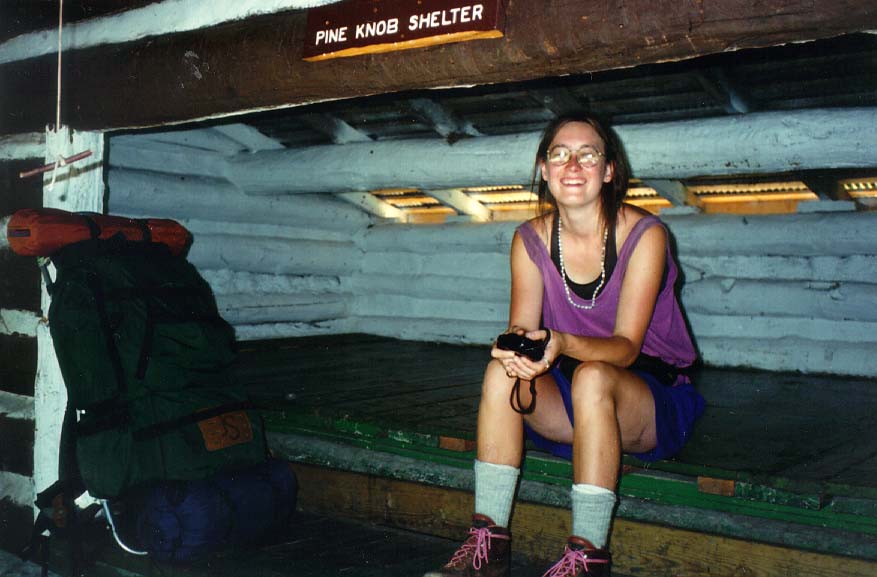

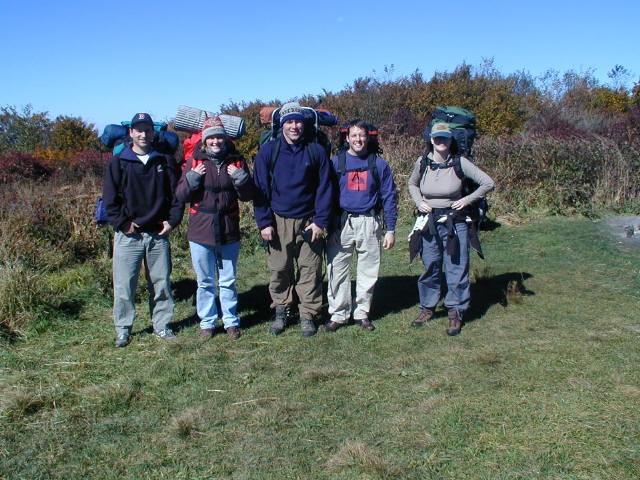







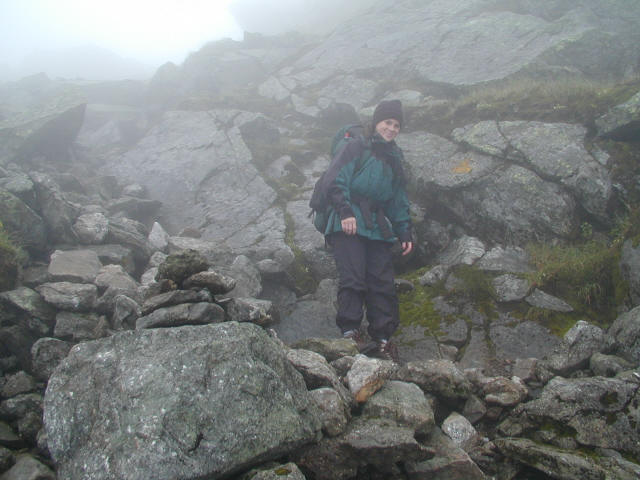
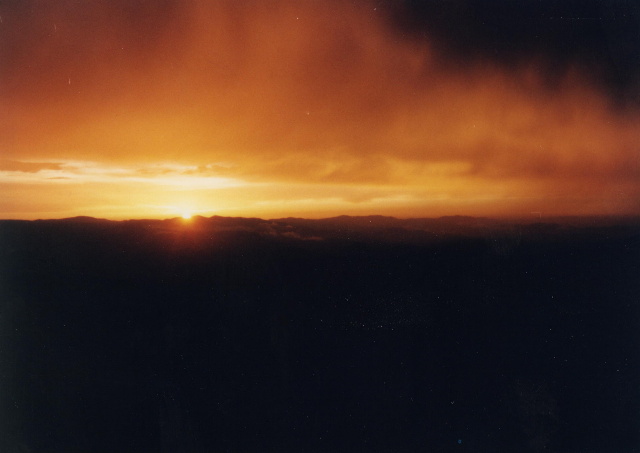
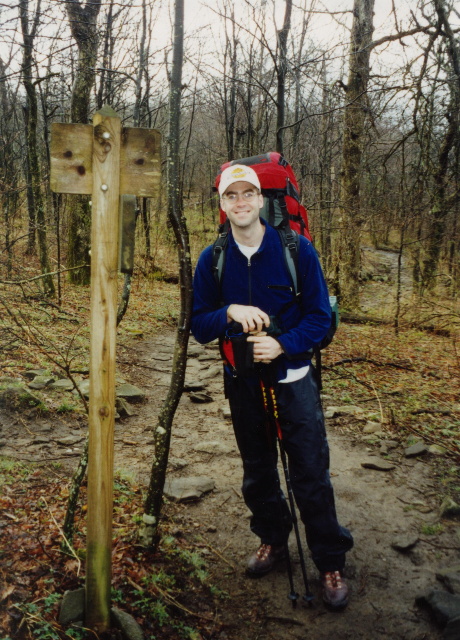









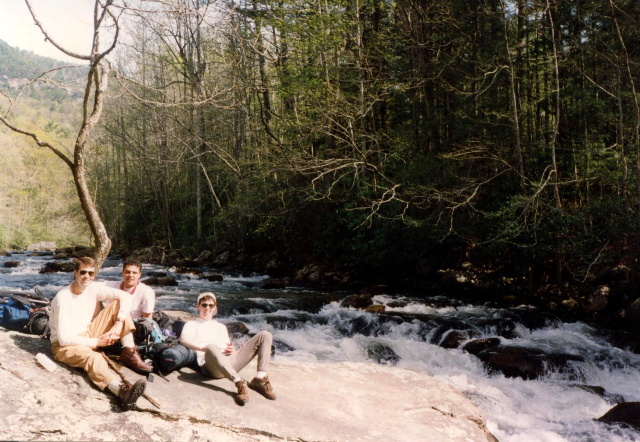
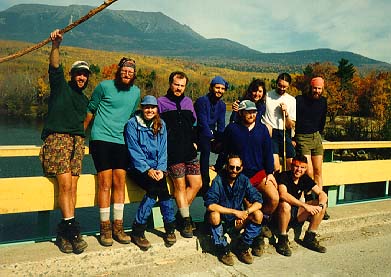


Speak Your Mind